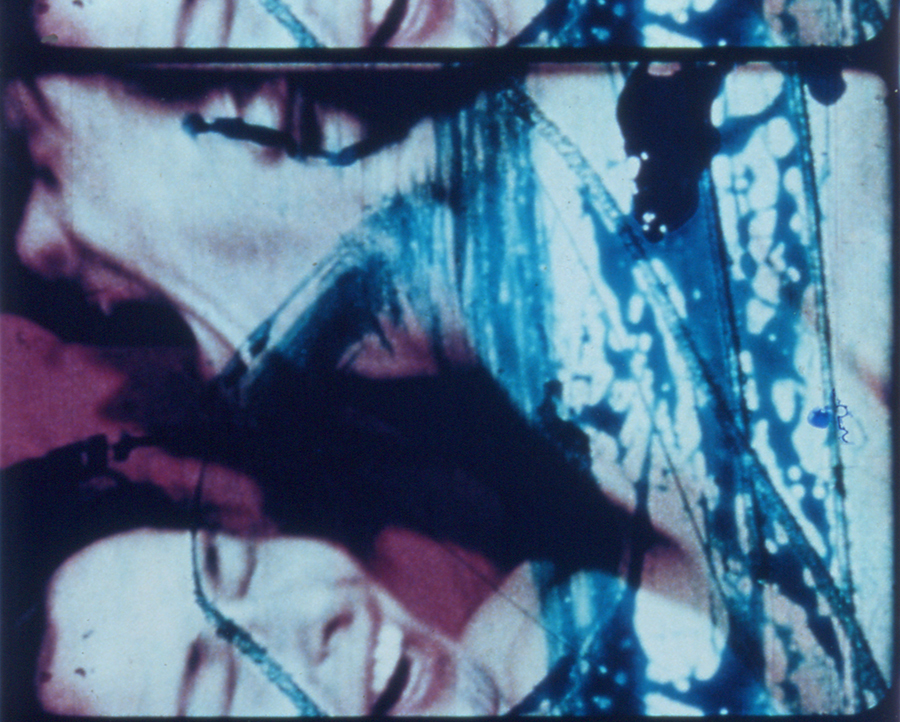Carolee, She was a Great Painter: Remembering Carolee Schneemann (1939 – 2019)
‘To Carolee, drawing, like painting, was as visceral as breath,’ writes Emma McCormick-Goodhart
‘To Carolee, drawing, like painting, was as visceral as breath,’ writes Emma McCormick-Goodhart

When I stepped off a Greyhound bus in New Paltz, New York, USA in December 2015, and into Carolee Schneemann’s car – for our first in-person meeting to discuss collaborating on a sound work – she suggested that we swing by the store across the street. She needed to buy replacement mascara, for hers had been inadvertently run over by a friend who had given her a lift home the previous night. I agreed immediately: it felt profound to be sourcing brush-on body paint with an artist who had made countless works using the body as a genre of painterly brush and amplified yet further by the fact that the etymology of the word ‘cosmetics’ stems from the Ancient Greek kosmos or cosmos (to adorn or order). Mascara duly procured, we ventured into the adjacent art supplies shop to find Christmas gifts for her friends. Luscious metallic oil crayons were chosen, and we bought water-soluble graphite sticks for ourselves after trial sketching.
Carolee’s oeuvre engaged with body, surface and space in expansive configurations, but, as she consistently emphasized, always in the capacity of a painter. This perspective was clarified by ‘Kinetic Painting’,the sweeping retrospective (her first and one that was long overdue) that toured from Museum der Moderne Salzburg to MMK Frankfurt and MoMA PS1 between 2015 and 2018. It seemed especially apparent in Salzburg, where the baroque energies and affect of a city set into steep rocks matched Carolee’s own outpourings in early landscapes, assemblages and performance works – such as Chromelodeon (1963), Meat Joy (1964) and Up to and Including Her Limits (1973–76) – in which painting, writ large, elides with the haptic nature of being-in-flesh.

To Carolee, drawing, like painting, was as visceral as breath; it was ‘about being permeated by the consequence of dimensionality that surrounds you’, as she articulated in a 2014 interview with Jarrett Earnest for Art Practical, and of being overtaken by those consequences. That she could so acutely feel herself at the threshold of dimension, and register it piercingly in form, aligned with her near-feline acuity of sensory perception. Heightened, I have no doubt, by a lifetime spent with her beloved cats, whose art – ephemeral, rhizomatic assemblages of torn toilet paper, twigs and fragments of wasp nests – she documented in a folio and often placed, wunderkammer-like, alongside her books. Her cat Kitch, in particular, was to become iconic as an onlooker in Fuses (1965), a self-shot filmic homage to lovemaking, and later, in Infinity Kisses (1981–87), a photographic series chronicling the kisses she received from her cats every morning in radical, interspecies tango. Carolee’s ability to ‘invite help from some unconscious dimension’, as she told me once, was honed early, intensified in childhood by ‘pantheistic’ excursions with her Scottish nanny to observe the moon’s face at night. It later found expression in her ‘ancient, magical […] purring’ Huguenot stone house, imbued with ‘psychic embrace’, which she and her then-partner, James Tenney, restored to its original state in the mid-1960s, guided by voices Carolee heard in dreams. (All quotations are from conversations between Schneemann and the author between 2015 and 2018 unless otherwise noted.)
Her artistic research also went far back: to the earliest instantiations of visual culture, to reclaimable spaces that predate patriarchal tradition and offered her ‘markings, time-factoring, physical depictions [and] analysis of the female body’. The visually alliterative series ‘Unexpectedly Research’ (1962–92) pairs ‘affinity’ images of her own experiments, as both ‘image and image-maker’, with those of non-Western and Indo-European artifacts – Minoan priestesses, Cycladic sculptures – that she encountered often decades later. Carolee’s pioneering approach to this matriarchal morpho-politic significantly predated the turn towards speculative fiction in contemporary philosophy and prose; she called it ‘ahistory’. During one visit in New Paltz, she asked me to find the entry for ‘cunt’ – long regarded a derisive term – in a feminist dictionary of etymology; the root of the word, we learned, is kin with ‘knowledge’. ‘See,’ she exclaimed! It was redeemed.

That Carolee was recipient of the Venice Biennale’s Golden Lion in May 2017 – accepting her award in an embroidered Etro coat – made earlier experiences come full circle, for she had first visited Venice in 1964, after premiering Meat Joy at the American Center in Paris. Venice’s ‘sense of floating […] in the motion of the waves’ was to provide the inspiration for Water Light/Water Needle (1966), an aerial ‘kinetic movement work’ of improvisatory rope crossings, which she called ‘flesh extensions’, suspended between trees. In 2017, I went to Venice to interview Carolee and, on one evening, we ate spider crab across from La Fenice opera house while talking low production values (which she promoted), olfactory installations and physiologies of mark-making in caves.
Virginia Woolf wrote in A Room of One’s Own (1929): ‘If ever a human being got his work expressed completely […] if ever a mind was incandescent, unimpeded […] it was Shakespeare’s.’ I venture the same of Carolee. She lived, she sensed, she learnt so intensely that everything was channelled into form or force. Of Woolf’s The Waves (1931),which she discovered on a traveling book van in Vermont as an adolescent, Carolee said: ‘I was transfixed for the rest of my life […] It sizzled, it steamed, it poured through me.’ Carolee’s own waves – oceanic in effect – will emanate and envelop publics deep into the future, in swells, without ever running dry.
Main image: Carolee Schneemann, 2017. Courtesy: Hans-Georg Roth























